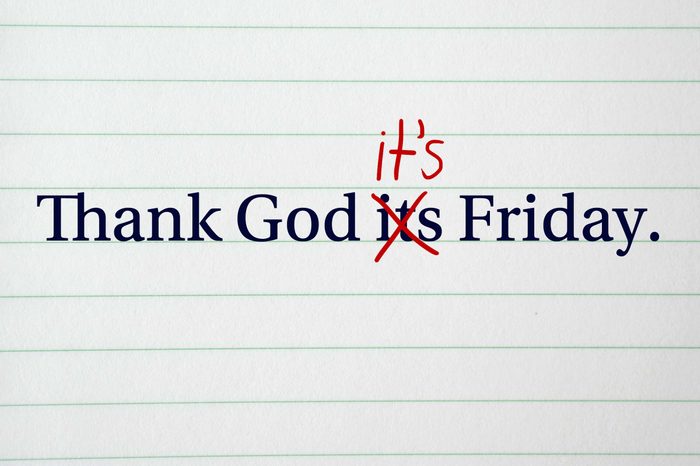
What is an apostrophe?
Apostrophes are those little floating comma shapes that denote contractions and possessives, and that sometimes even make words plural. They’re tiny, they’re tricky, and yes, the way you use (or misuse) them instantly indicates your grade in high school English. As the famously nitpicking former editor Lynne Truss once put it, “To those who care about punctuation, a sentence such as ‘Thank God its Friday’ (without the apostrophe) rouses feelings not only of despair but of violence.” For more help, here’s how to find the 9 mistakes a spellcheck won’t catch.
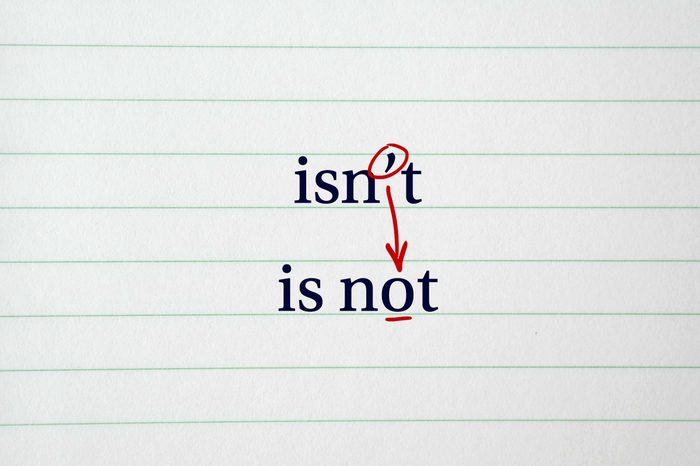
Do use apostrophes for contractions
Where do apostrophes come from, anyway? The more informally we speak, the more often we tend to leave out letters and even small words. Our brains glide over these small omissions in the spoken word, filling in the blanks, but when it comes to writing, we still use apostrophes to indicate that something has dropped out. For example, the apostrophe in isn’t points to the missing o in not. Someday it may be acceptable to write isnt in a business letter, but at this point, it still is not a great idea.
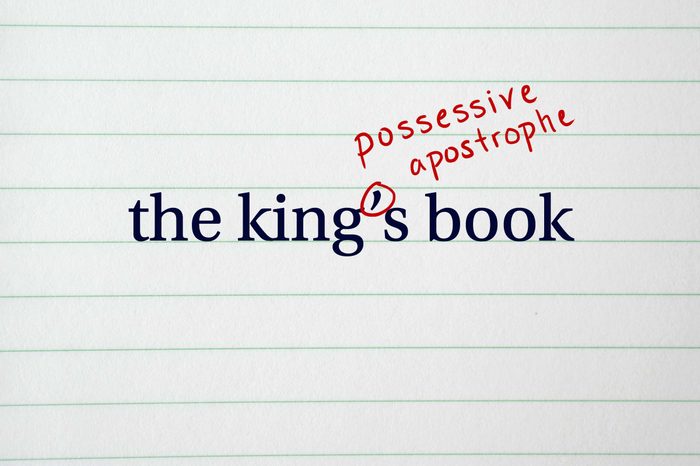
Do use apostrophes to show possession
Of course, apostrophes don’t only serve as place holders for missing letters or words—they also indicate possession. Take this easy example: In “the king’s book,” the book belongs to the king. Some scholars believe the possessive apostrophe was introduced in the 17th century as another form of contraction, with the full, more formal expression being “the king his book.” Why didn’t “the queen her book” turn into “the queen’r book”? No one knows, but the male ending might have been given bigger importance than the female ending. Find out the truth behind 14 grammar rules your English teacher lied about.
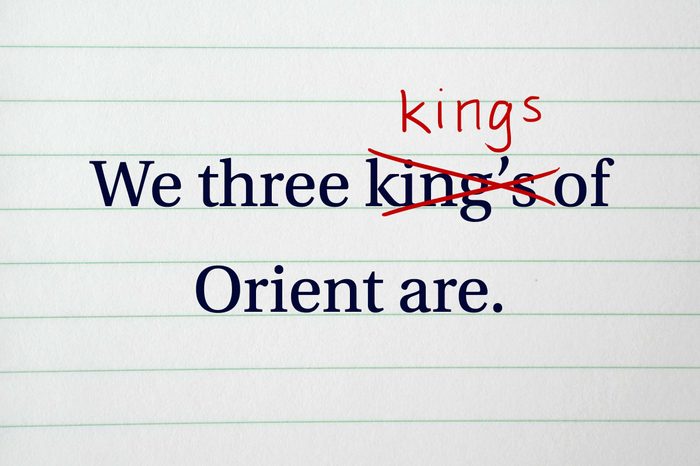
Don’t use apostrophes for plurals
Most English nouns become plural simply by adding an s or es, and you can’t just tack on an apostrophe for the heck of it. It’s never “We three king’s of Orient are.” It’s always “We three kings.” Same goes for family names: It’s always the Kings who invite you over, never the King’s. Make sure you avoid these common punctuation mistakes that make smart people look dumb.
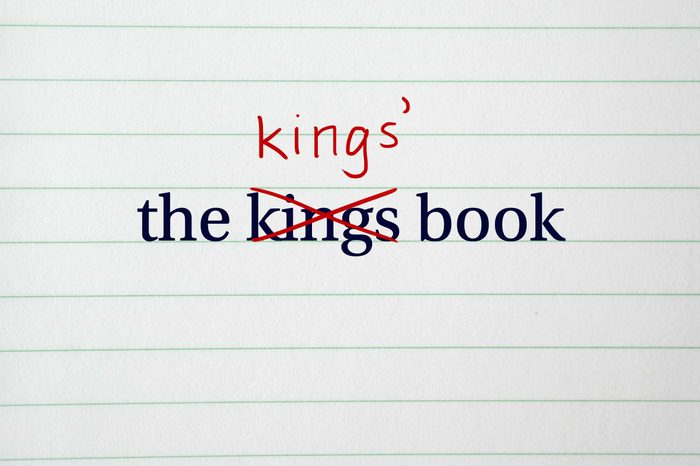
Do use apostrophes for plurals—if there’s possession
But what if the subject is plural and you still want to indicate possession? Put an apostrophe after the final s. So if those kings of Orient share a book, it becomes the kings’ book. What if it’s a family that happens to be called King? Well, if the whole tribe is sharing a single volume, it’s the Kings’ book. (And maybe it’s time for them to hit up a library!)
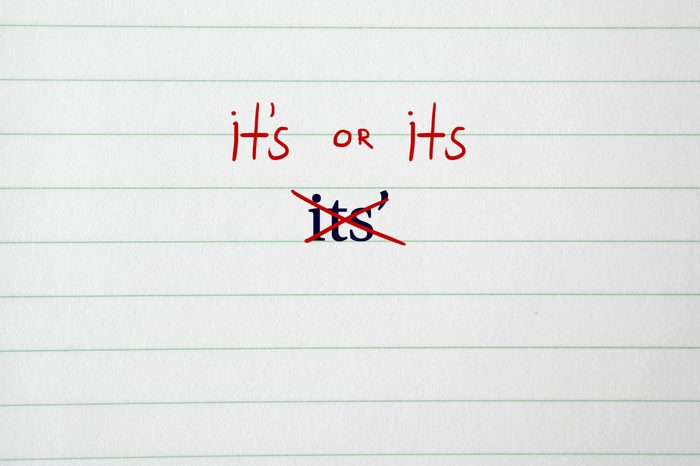
Don’t confuse its and it’s
The most common apostrophe errors involve homonyms: words that sound like each other but are spelled differently. Let’s start with Its’, its and it’s. Its’ is never correct; it is singular, so it would never require a plural possessive. If you’re indicating possession, use its—no apostrophe is ever required. But if you’re forming a contraction, it is becomes it’s. These differences may seem small, but they are some of the mistakes that will really trigger the Grammar Police. Check out these 12 little-known punctuation marks we should all be using.
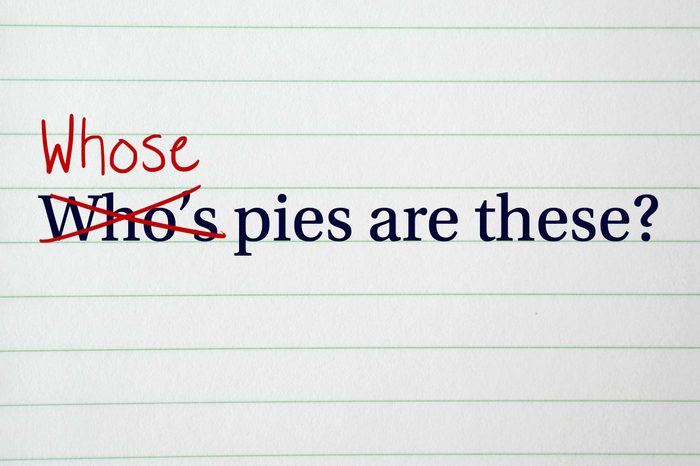
Don’t confuse who’s and whose
Another common apostrophe error involving homonyms revolves around who’s vs. whose. As with its, we use whose to indicate possession, as in “Whose pies are these?” And again, as with it’s, we only use who’s as a contraction, as in “I don’t know whose they are, but I know who’s going to eat them.”
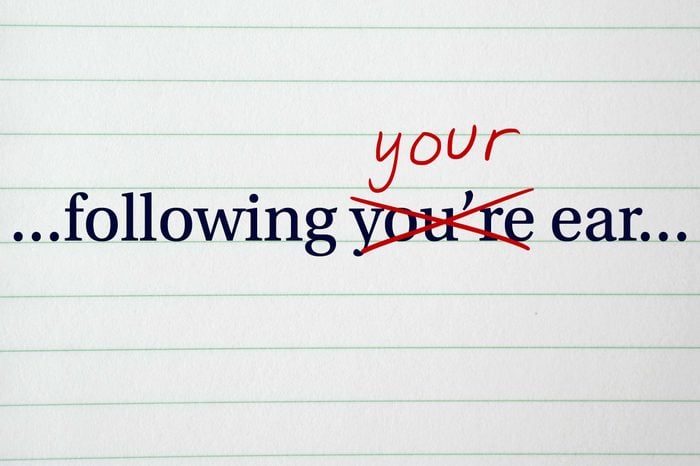
Don’t confuse your and you’re
This is yet another case in which following your ear will get you in trouble; you’re just going to have to learn to proofread and double-check to make sure the possessive (your) has no apostrophe and the contraction (you’re) gets the one it’s entitled to.
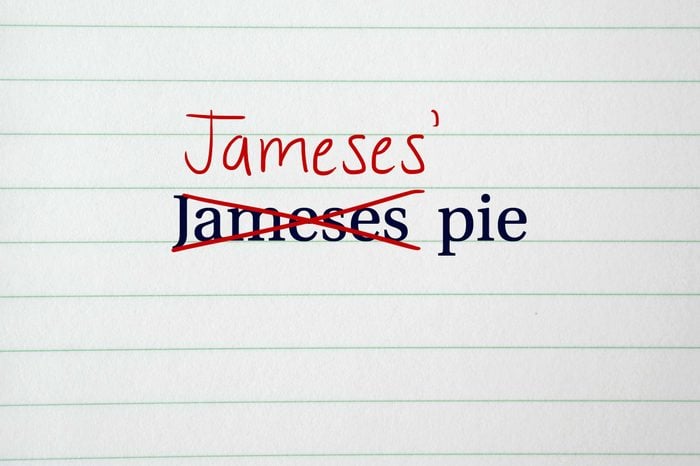
Do use an apostrophe when a singular noun ends in “s”
Always check with the powers that be at your company, organization, or school, because different people use different styles—adding an s to singular, possessive nouns ending in s being one of the rules in question. If your friend James bakes a pie, some style books would tell you to rave about James’s pie, while others would say that James’ pie is delicious. But if Mr. and Mrs. James collaborate in the kitchen, the rule is a bit clearer: Call it the Jameses’ pie. The pie needs an apostrophe to show that it’s theirs, but it doesn’t require an extra s at the end because Jameses is already plural. Don’t miss these other simple rules for using apostrophes right every time.
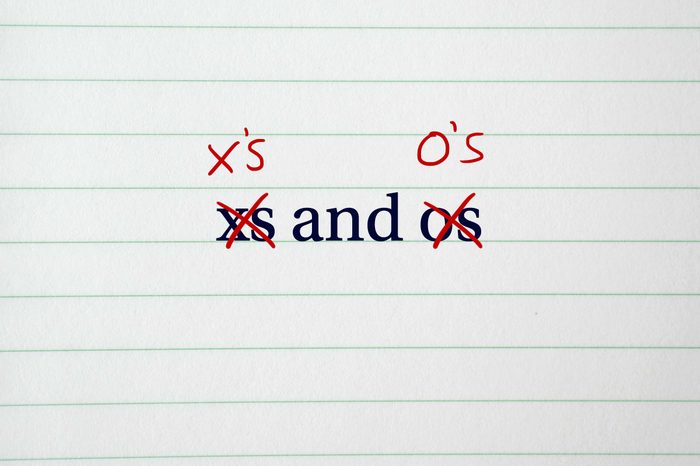
Do use apostrophes with certain plurals
But wait—there are some times when it’s correct to form plurals with apostrophes. According to one grammar maven, “Whenever you have plural lower-case letters, use the [‘s] to make the letters plural. [As in] ‘Grandma prefers to sign birthday cards with k’s and h’s instead of x’s and o’s.’“ On the other hand, most writers don’t use them to pluralize upper case letters, unless they add clarification. For instance, “Kevin has two BAs (one in English and one in communications), and he got straight A’s every semester.”
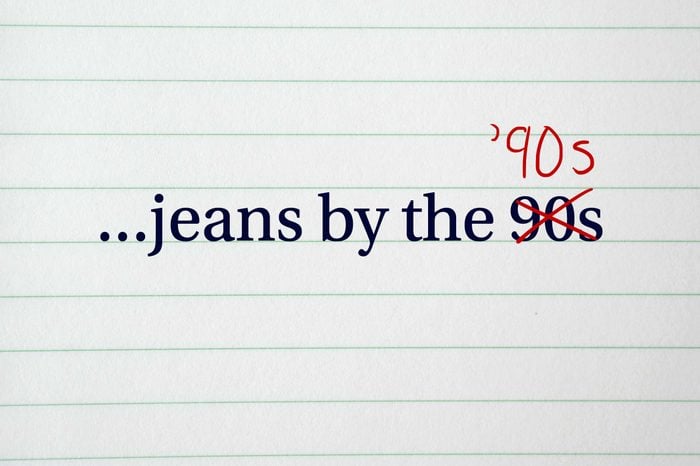
Do use apostrophes with certain numbers
Now we come to numbers. You generally shouldn’t add an apostrophe to the end of a number—so you met a woman in her 50s (not 50’s) when the temperatures were in the 80s (not 80’s). In discussing dates, we generally still don’t add an apostrophe s to the end (“Bellbottoms were big in the 1960s”), whereas we do add an apostrophe at the beginning if the date is abbreviated (“But no model would be caught dead those flared jeans by the ’90s”). Memorize these other 41 grammar rules that will make you sound smarter.